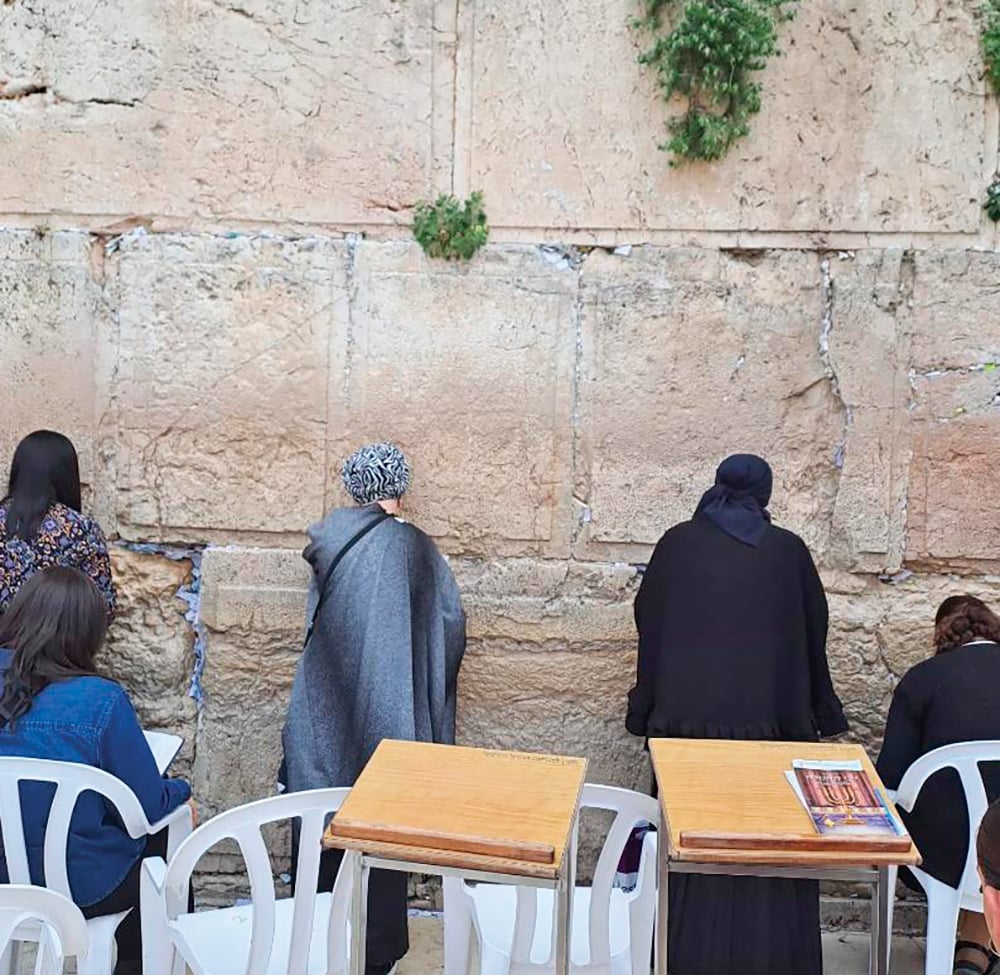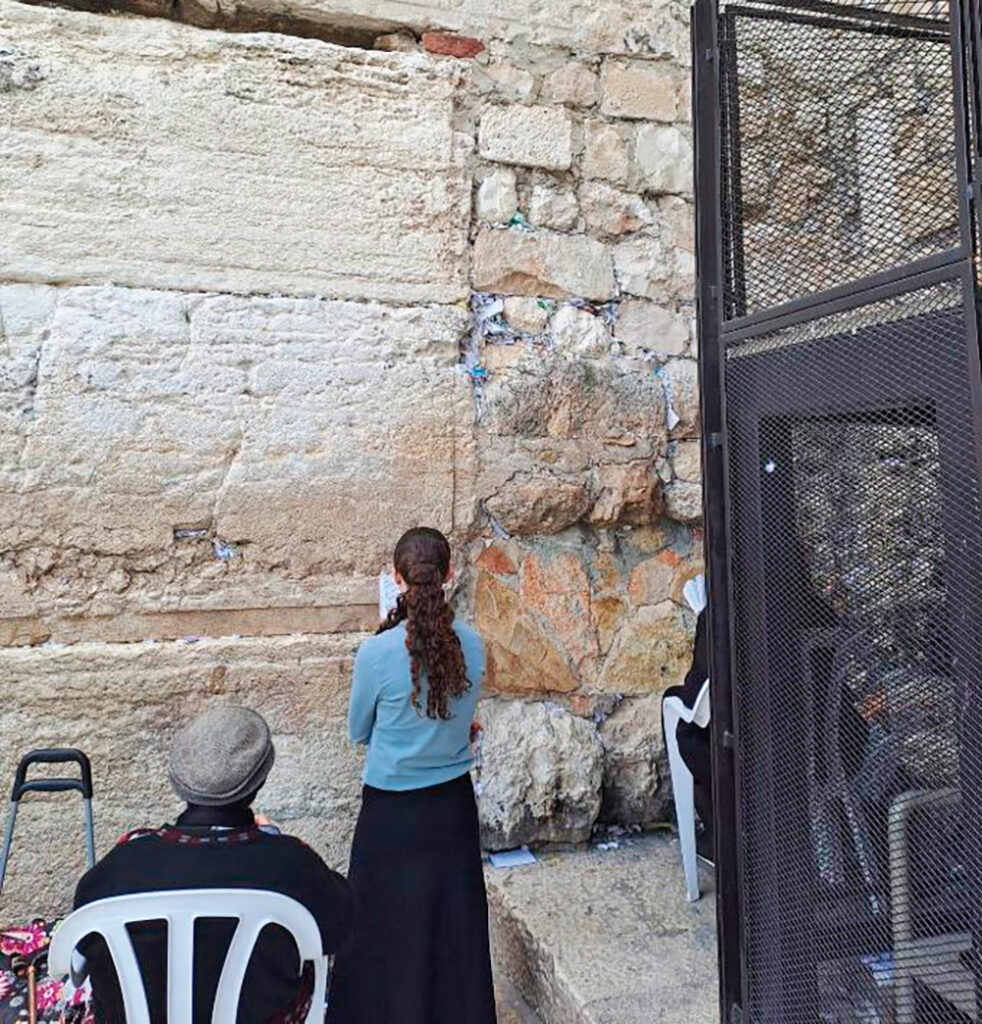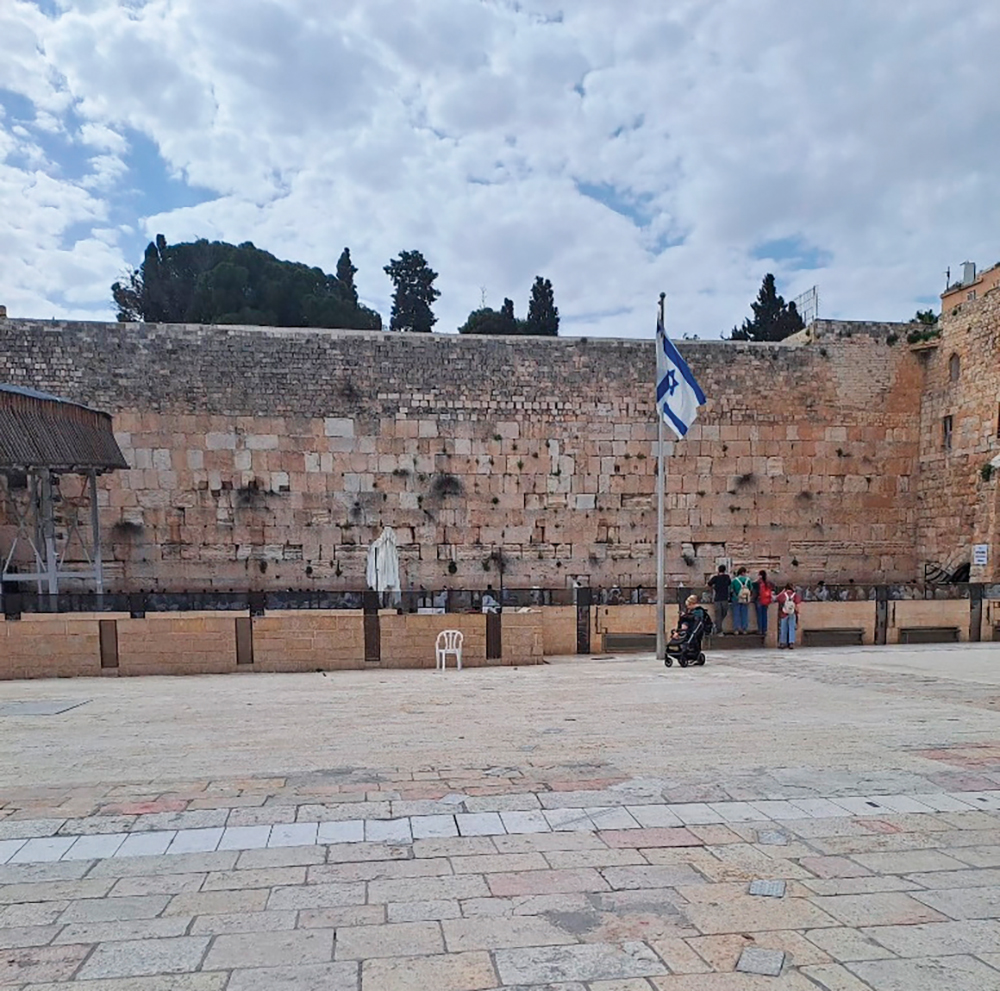
(Some of the information for this article is taken from a lecture given by Doron Oren for guides of the Western Wall Heritage Foundation.)
I was sitting during a break between tours in the guide’s room at the Kotel. A fellow guide walked into the room and proclaimed: “We can tell Mashiach is coming soon!” I looked at her quizzically. Of course, we all want Mashiach, but why do you say that? “Don’t you know?” she responded, “An Aroma coffee shop opened up right outside the Kotel plaza!” Now I was even more puzzled and asked her to explain. “During the time of the Beit Hamikdash,” she answered, “the holy area was on Har HaBayit. Here, surrounding the Kotel, were stores and shops!”
A highlight of every trip to Israel is the time spent davening at the Kotel. Although now the Kotel is the holiest place that we have access to, in the time of the second Beit Hamikdash, it was part of four retaining walls which King Herod built when he expanded the platform of Har HaBayit in the first century BCE. The current prayer plaza is merely a small segment of the entire Western wall’s length. Additionally, the Western wall in the time of the Beit Hamikdash was much taller and contained pilasters (columns built into the wall), similar to what we see today at Ma’arat HaMachpela in Hebron.
So why does everyone come to daven at the Kotel HaMa’aravi? Does it have any inherent holiness? Chazal teaches us that when the Beit Hamikdash was destroyed, God never removed His Presence from the Western Wall (Shemos Rabbah 2). There is a heightened shechinah at the Kotel HaMa’aravi, which is why people walk backward as they leave, so as not to turn their backs on the Shechinah.

Is the entire Kotel that we see today from the time of the Beit Hamikdash? If one looks at the
stones, one can clearly see three three distinct styles of stones. The bottom seven layers are the Herodian stones from the time of the second Beit Hamikdash. Herodian stones can be clearly identified by the border surrounding the stone and the flat part of the stone in the middle. The next four layers of stones, which look more square, are from the early Muslim era (7th-11th Century C.E.). The top layer of small stones is from various other eras.
A careful observer of the bottom layer of stones will notice that some of them don’t have that border, rim and flat middle. When are they from? These stones are also from the time of the second Beit Hamikdash but have been effaced. There is even one theory that these are stones that were hewn during the time of the first Beit Hamikdash and were placed here in secondary use by King Herod.
Yet, there is one area of the Kotel where small stones are located among the bottom seven layers. On the right hand corner of the women’s section, there is a group of small stones right next to all of the Herodian stones. This must have been a gate, an entrance to Har HaBayit during the time of the Beit Hamikdash. It is called Barclay’s Gate, after the archeologist who discovered it.
If you ever manage to look up from the men’s section at certain higher stones of the Kotel, you can see engravings in Hebrew. This was a way people would “sign their name” upon visiting the Kotel. But how did they reach so high up? Prior to 1967, the street level was higher so the engravings are at a level where people could easily reach.

When looking carefully at the stones, you may notice some large gaps or holes in some of the stones. No, I’m not referring to the small gaps where people place their letters. There are also large gaps which used to support the arches of the buildings of the Mamluk Era. These buildings hid much of the Kotel for many years.
The Kotel stones tell the story of our people coming to daven and yearn for the coming of Mashiach and building of the third Beit Hamikdash. As we prepare for Pesach this year, may our tefilot be accepted and may we soon merit to go beyond the wall and bring our Karbon Pesach with joy!
Hava Preil is an enthusiastic licensed Israeli tour guide. She grew up on the Upper West Side of Manhattan and holds an M.A. in Judaic studies. Hava has developed and taught accredited courses in Tanach and Jewish ethics for Naaleh/Woodmont College and Cybersem. She currently lives in Givat Ze’ev with her family. Hava can be reached at IL:054-844-1579; USA: (845) 391-0438; or at havapreil@gmail.com. Visit her new website, havapreiltours.com. Hava is currently offering virtual tours of various sites in Israel, a perfect activity for your school, synagogue or youth group!








